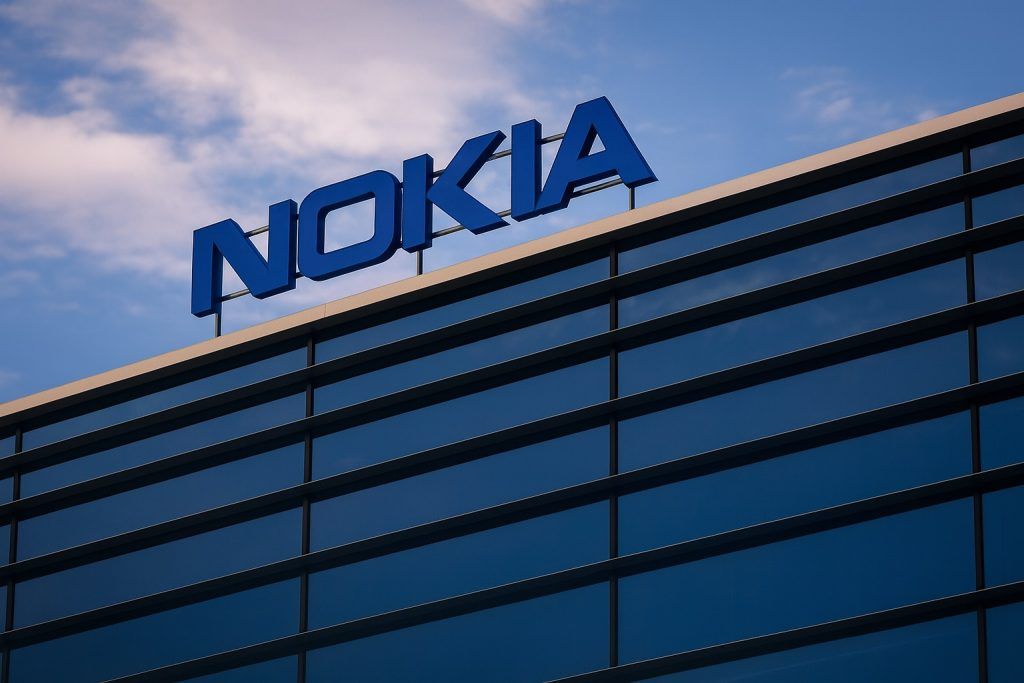- Price jump: Ford shares closed around $13 on Oct. 30, up roughly 10% after the Oct. 23 earnings report, and now near a one-year high [1] [2]. This marks a gain of nearly 40% year-to-date [3].
- Strong earnings: Ford’s Q3 results (reported Oct. 23) beat forecasts – revenue was $50.5 billion (+9% YoY) and adjusted EPS $0.45 (versus ~$0.36 expected) [4] [5]. Investors cheered the beat, even as the company trimmed full-year profit guidance.
- Guidance cut: A September fire at aluminum supplier Novelis will shave $1.5–2.0 billion off 2025 profits, prompting Ford to lower its adjusted EBIT outlook to $6.0–6.5 billion (from $6.5–7.5B) [6] [7]. CEO Jim Farley said Ford has “made substantial progress in a short time to minimize the impact in 2025 and recover production in 2026” [8].
- EV losses: Ford’s electric-vehicle unit (Model e) continues to lose money. TS2.tech reports losses of ~$0.8–1.3 billion in early 2025 quarters [9]. U.S. EV sales are down about 30% YoY, and only ~5% of U.S. buyers chose Ford EVs last year [10] [11]. In response, Ford is pushing hybrids and a cheaper EV platform, while delaying some EV launches (including an indefinite pause of the F-150 Lightning) to focus on profitable trucks [12].
- Recalls: Quality issues are weighing on sentiment. Ford has logged a record 100+ safety recalls in 2025 [13], far more than rivals. (Recent recalls include ~625,000 vehicles for seatbelt/camera defects, and regulators fined Ford ~$165 million for slow fixes [14].) The automaker insists the latest fixes won’t hit this year’s earnings materiality, but recalls remain a risk.
- Labor and tariffs: Ford avoided new strikes by signing a 2024–28 UAW labor deal with “hefty wage raises” (top pay ~$40–42/hr) [15]. This stabilizes costs but raises expenses. On trade, recently enacted U.S. credits for domestic assembly have cut Ford’s net tariff hit – management now expects only about $1 billion of tariff-related costs in 2025 [16].
- Dividends & valuation: Ford resumed a regular dividend ($0.15/share in Q4), yielding ~5–6% [17], one of the highest in the auto sector. The stock trades at roughly 14× forward earnings (below peers) [18]. Wall Street consensus is largely neutral: most analysts rate Ford a “Hold,” with an average 12‑month target around $11–$12 (below the current price) [19] [20].
Earnings and Stock Reaction
Ford’s shares spiked after the Oct. 23 earnings release. Trading jumped about 10% on Oct. 24, hitting $13.84 (a ~52-week high) [21] [22]. By Oct. 27 the stock had cooled slightly to the low-$13s [23], but it remains near its high point. An Investopedia report noted Ford was the best-performing S&P 500 stock on that Friday morning, after investors “overlooked” the guidance cut to focus on the strong results [24] [25].
Ford’s beat was driven by booming truck and commercial vehicle sales. The company reported record Q3 revenue of $50.5B and a GAAP EPS of $0.60 (adjusted $0.45) [26] [27], far exceeding analysts’ expectations. Ford Pro (commercial trucks and vans) led the way, with revenue up ~11% YoY, generating healthy profits. CEO Farley said focus on “execution and quality paid off” in Q3. CFO Sherry House added that excluding one-time issues, the quarter was roughly in line with plan [28] [29].
Immediately after the report, Ford revised its 2025 profit outlook downward. A September fire at Novelis (aluminum supplier) will cut F-Series truck production, costing an estimated $1.5–$2.0B in EBIT [30] [31]. Ford now sees full-year EBIT around $6.0–6.5B [32] [33]. Investors largely shrugged off this, and Ford’s rally carried into pre-market on Oct. 28 (TS2 noted Ford shares were ~$13.2 pre-market Oct. 28 [34]). “We have made substantial progress in a short time to minimize the impact in 2025 and recover production in 2026,” Farley said [35], vowing to source alternate aluminum supply and add production shifts next year.
EV Strategy Under Pressure
Ford’s electric vehicle (EV) ambitions have hit a rough patch. The Model e division is losing hundreds of millions of dollars per quarter. Industry trackers cited by TS2.tech report Ford lost ~$849M in Q1 and ~$1.3B in Q2 from EV operations [36], with an additional ~$1.1B loss in Q3 [37]. Farley has acknowledged that heavy discounts and weak demand are the cause – only about 5% of U.S. buyers chose EVs in 2025 [38]. He is refocusing on hybrids and cheaper platforms to make EVs more profitable.
Ford is still developing new EV models – for example, an electric Explorer SUV and a high-performance F-150 Lightning “Flash” edition are planned – but it has also shifted production. Notably, Ford indefinitely paused the F-150 Lightning EV assembly to prioritize more profitable gas trucks [39]. Analysts point out that Ford’s legacy gasoline trucks (F-Series, Bronco, Maverick) remain its cash engine. Ford expects to expand F-Series production (adding 50,000 vehicles next year) to recoup losses from the aluminum fire [40].
The broader EV market is also softening as temporary incentives end. Tesla, for instance, saw record EV deliveries in Q3 as buyers rushed to claim the expiring $7,500 tax credit [41]. But with that credit gone, demand is expected to slow. Reuters noted EV sales in the U.S. will likely fall “through the rest of the year” without the tax credits [42]. Ford is cautiously cutting EV costs, but until electric sales scale up or costs drop further, EV losses will keep pressure on margins.
Recalls and Quality Issues
Adding to investor caution are Ford’s unprecedented recall figures. TS2.tech reports Ford has issued over 100 major recalls in 2025, far more than any rival [43]. In late October alone Ford announced recalls of ~1.45 million vehicles for faulty backup cameras, and another 625,000 for steering and seatbelt issues [44]. Regulators even fined Ford ~$165M last year for delaying camera recalls.
These problems have dented profits and the company’s reputation. Ford says the newest recalls will not significantly impact earnings, but analysts warn that any new quality fiascos could quickly reverse sentiment. As one strategist bluntly put it, Ford’s turnaround now hinges on avoiding “self-inflicted” problems and proving its long-term EV bets can eventually pay off [45].
Labor and Tariff Relief
On costs, Ford is in better shape than a year ago. The UAW labor strife of 2023 is behind us: Ford and the union agreed to a new 4.5-year contract in late 2023, granting big wage hikes (permanent workers’ top rate rises over 30%, to about $42.60/hr by 2028) [46]. TS2 notes this deal includes “hefty wage raises (top pay ~$40/hr) and profit sharing” [47]. The outcome: no fresh strikes, but higher labor costs going forward.
On the trade front, Ford is benefiting from new U.S. policies. In October, President Trump signed rules expanding EV tax credits for U.S.-built vehicles. This effectively offsets much of the 25% tariffs on imported parts. Ford’s finance team says the new credits have trimmed the company’s net tariff hit for 2025 to roughly $1 billion (down from $3 billion before the relief) [48]. In short, Ford’s heavy U.S. production footprint means it will bear fewer costs from Trump-era tariffs than peers. Ford’s CEO even publicly thanked the administration for the relief, noting it allows the company to pass on savings to customers.
Analyst Commentary and Outlook
Analysts are mixed on Ford’s stock. Most have a Neutral/Hold rating on the shares [49] [50], reflecting a balance between Ford’s strengths (strong truck sales, solid cash flow, high dividend) and its challenges (EV losses, recalls). Price targets cluster in the low-$12 range [51], which is actually below the current market price. For example, a TS2.tech analysis notes the Wall Street consensus holds Ford as a “Hold” with a 12-month target around $11–$12 [52].
That said, some bullish analysts have raised their targets after the strong quarter – a few now see $15–$16 potential if execution stays strong [53]. As TS2 observes, Ford’s valuation looks attractive at about 14× earnings [54], and the 4–5% dividend yield is one of the highest in autos. One TS2 strategist argues if Ford can “deliver trucks, avoid new quality fiascos, and steadily improve EV economics – the underlying value will shine through” [55].
Ford’s CFO Sherry House reinforced confidence on the Oct. 23 earnings call: she said Ford “would have raised guidance had it not been for the [supplier] fire,” underscoring faith in the company’s core performance [56]. Several analysts have noted that as long as Ford’s gasoline truck business stays profitable, it can weather the EV losses. But they warn that without a clear EV upside, “breakthrough catalysts are scarce” in the near term [57].
Rivals and Sector Trends
By way of comparison, other automakers have seen similar headwinds and rallies. General Motors (GM) had a very strong quarter: it raised its 2025 profit forecast (now $12.0–13.0B) after reporting solid results, and its stock jumped 15% on Oct. 21 [58] [59] – Ford’s stock briefly climbed in sympathy (about +5% that day) [60]. Like Ford, GM cited falling tariff costs and lower EV losses. Tesla (TSLA), by contrast, reported record deliveries and a quarterly revenue of $28.1B (up from $24.9B a year ago) [61], but profit came in below forecasts ($0.50 vs. $0.55 expected) and the stock fell ~4% after the report [62]. Tesla warned that higher costs and the expiry of the $7,500 EV credit would squeeze margins going forward [63].
Rivian (RIVN) – a fledgling EV rival – is facing a downturn. On Oct. 23, Rivian announced it will lay off about 600 employees (4.5% of staff) due to softer EV demand now that federal credits have lapsed [64]. Rivian has projected lower deliveries for 2025 and is taking charges on its EV plans, and its stock is off sharply from its highs. The contrast is clear: Ford, with its entrenched ICE pickup franchise, is profitable today, while pure-play EV makers are scrambling to prove their models can sell without subsidies.
In short, Ford’s recent rally reflects solid truck sales and cash generation. Investors must now decide whether that strength can carry the stock higher or whether Ford’s EV losses and recall risks will reassert themselves. As one strategist put it, Ford’s future hinges on whether it can turn revenue gains into sustained profit growth – by “avoiding self-inflicted problems” and finally nailing its EV strategy [65]. With a roughly 4% dividend yield and a valuation below many peers, some see Ford as a value play, but analysts caution that the stock may struggle without new catalysts in the pipeline [66].
Sources: News reports and filings (Reuters, TS2.tech, Investopedia, Yahoo Finance) through Oct. 30, 2025 [67] [68] [69] [70]. (Stock price and data from market sources.) All information cited as indicated.
References
1. ts2.tech, 2. www.investopedia.com, 3. www.investopedia.com, 4. ts2.tech, 5. www.investopedia.com, 6. ts2.tech, 7. www.investopedia.com, 8. www.reuters.com, 9. ts2.tech, 10. ts2.tech, 11. ts2.tech, 12. ts2.tech, 13. ts2.tech, 14. ts2.tech, 15. ts2.tech, 16. www.reuters.com, 17. ts2.tech, 18. ts2.tech, 19. ts2.tech, 20. ts2.tech, 21. ts2.tech, 22. ts2.tech, 23. ts2.tech, 24. www.investopedia.com, 25. www.investopedia.com, 26. www.reuters.com, 27. ts2.tech, 28. ts2.tech, 29. ts2.tech, 30. ts2.tech, 31. www.reuters.com, 32. ts2.tech, 33. www.investopedia.com, 34. ts2.tech, 35. www.reuters.com, 36. ts2.tech, 37. ts2.tech, 38. ts2.tech, 39. ts2.tech, 40. www.reuters.com, 41. www.reuters.com, 42. www.reuters.com, 43. ts2.tech, 44. ts2.tech, 45. ts2.tech, 46. www.reuters.com, 47. ts2.tech, 48. www.reuters.com, 49. ts2.tech, 50. ts2.tech, 51. ts2.tech, 52. ts2.tech, 53. ts2.tech, 54. ts2.tech, 55. ts2.tech, 56. ts2.tech, 57. ts2.tech, 58. www.reuters.com, 59. www.reuters.com, 60. www.reuters.com, 61. www.reuters.com, 62. www.reuters.com, 63. www.reuters.com, 64. whtc.com, 65. ts2.tech, 66. ts2.tech, 67. www.reuters.com, 68. ts2.tech, 69. ts2.tech, 70. www.investopedia.com







